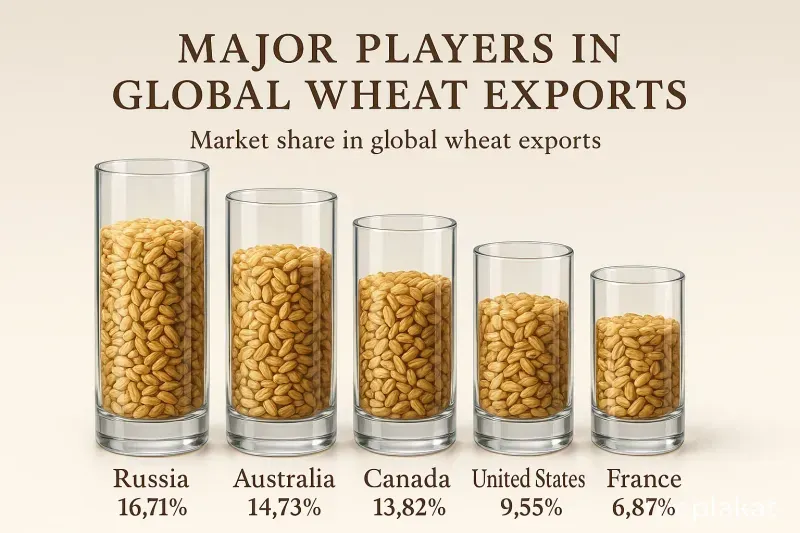Published
in Economy
In the landscape of global agriculture, wheat stands as a cornerstone commodity with several nations playing crucial roles in its export. As of 2023, countries such as Russia, Australia, Canada, the United States, and France have emerged as dominant exporters, significantly influencing the market landscape.
Wheat is a fundamental component in the diets of billions of people worldwide, serving as the primary ingredient in products like bread, pasta, and pastries. As a versatile grain, it is cultivated extensively across various continents, fulfilling both nutritional and economic needs.
The global wheat market in 2023 is predominantly influenced by the contributions of several key players. Russia leads with a remarkable 16.71% share, followed closely by Australia and Canada, with 14.73% and 13.82%, respectively. The United States captures a 9.55% market slice, while France accounts for 6.87%. These nations leverage their large-scale production capabilities, advanced agricultural technologies, and strategic trade policies to maintain their stronghold in the export market.
Beyond the leading exporters, a multitude of countries engage in wheat trade, collectively making up a minor share—referred to as 'the rest.' These include nations from diverse geographic regions, showcasing the global reach of wheat trade. Smaller players, while contributing individually less than 1%, cumulatively support the market's fluidity and resilience.

Russia is the largest exporter of wheat in 2023, holding a market share of 16.71%.
While smaller countries individually contribute less than 1% to the global wheat export market, their cumulative participation ensures market diversity and security.
Wheat is crucial globally because it is a staple food responsible for numerous dietary and economic functions, influencing food prices and economic strategies.